Twitter Tips for Beginners: Everything I Wish I Knew About Twitter When I Started

Former VP of Marketing @ Buffer
This post originally published on March 17, 2014. We’ve updated it here with the latest information, images, and resources.
Before I joined Buffer, I barely had a Twitter account.
It existed by its lonesome for a few years as a placeholder for the day when my work allowed me to tweet freely. That day came when I had the privilege to join up with the Buffer team, and I dove right in, applying all the Twitter knowledge I had stowed away. And still, even with a running start, I had so much to learn.
Knowledge seldom takes the place of experience. So while I muddled through my first few weeks on Twitter—experimenting and fiddling—I noticed the many things I could have only learned by doing. Here are the big ones. Call them Twitter tips for beginners.
Maybe you can relate to some?
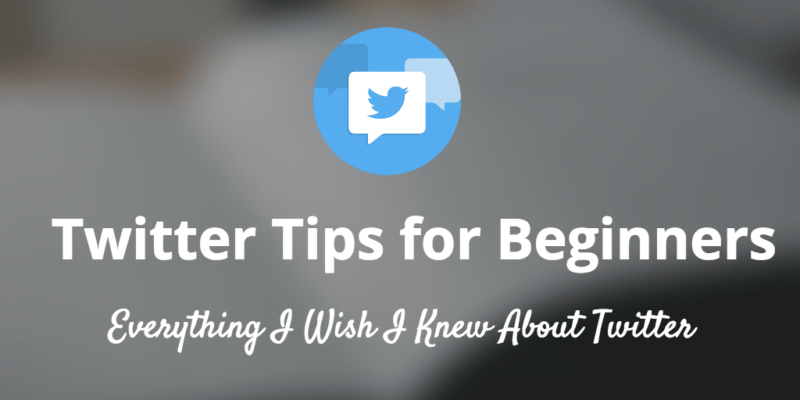
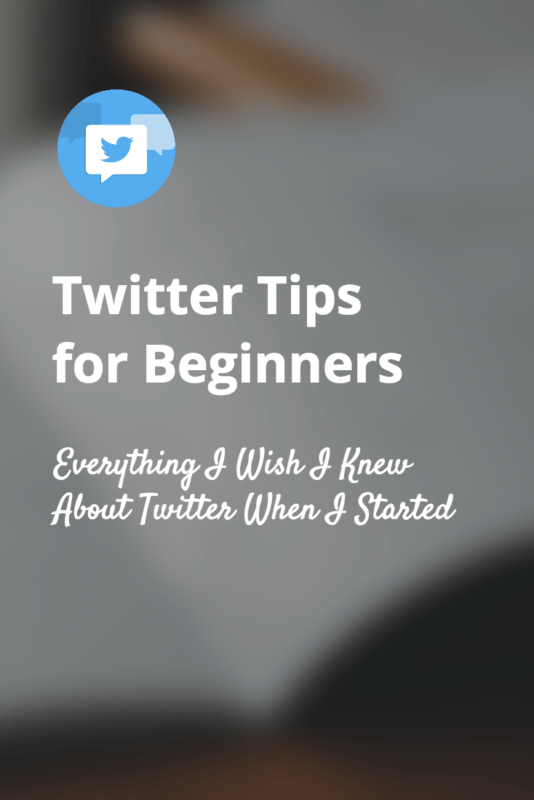
1. You don’t have to read every tweet
Phew! This one took a huge burden off my shoulders because I was literally trying to read every Tweet from the people I followed. It simply wasn’t feasible. The average person tweets 22 times per day (and I was following many in the digital marketing realm, so my tweet average was likely a bit higher). Let’s extrapolate from there:
- If you’re following 100 people, you could see 2,200 tweets per day
- If you’re following 500 people, you could see 11,000 tweets per day.
- If you’re following 1,000 people, you could see 22,000 tweets per day.
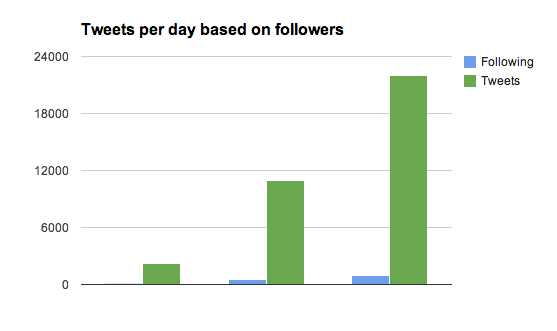
Put another way, since tweets can average 30 characters in length, a person following 1,000 people would see enough content in one day’s time to fill George Orwell’s Animal Farm four times over.*
You don’t have to read every Tweet. Phew. Instead …
2. Organize the people you follow into Twitter lists
Understanding how my stream worked was a huge undertaking at first. Retweets brought different avatars into my feed. Sponsored content appeared seemingly at random. It was exciting and new and a little much to take in.
Thankfully, I discovered lists.
My greatest value from lists is that I see the most important, original content from select groups of people, free from sponsored content. In some ways, it is a minimalist’s Twitter.
My interests are varied, so I break them out into different lists. I have a list for digital marketing, a list for New England Patriots football, a list for Boise State football, and a lot more. It is a useful alternative to surfing the entire stream.
Here, for example, is a list of all my teammates at Buffer:
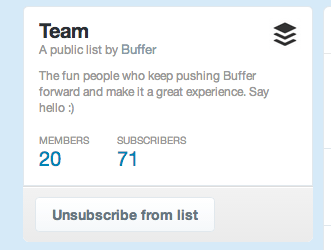
3. Respond to everyone
Those who are longtime Twitter users with big followings might not be able to handle this volume of responses, but for us newbies? Responding to anyone and anything is a huge part of being engaged in Twitter and growing your connections.
When someone retweets you, mentions you in a tweet, or favorites one of your tweets, they are seeking a connection with you. From a certain perspective, this is a truly humbling event. Someone has valued you and your profile enough that they want to connect. It’s kind of an honor.
One of the most engaged brands on Twitter—the @notebook account—places a huge emphasis on responding to everyone.
“Whether you’re managing an international brand like Nike, or a local deli, it’s important to say thank-you to every follower who asks a question, has a problem, or gives you a compliment. Some will respond back, and others will retweet your response simply because they want to show their friends that you’ve engaged with them.”
4. Use a scheduler like Buffer
An incredibly important element to success on Twitter is consistency. Tweet often and tweet regularly. Consistency, however, doesn’t always fit into my schedule.
That’s why social media management tools like Buffer are so helpful. With Buffer, I can curate a bunch of great content to share (even retweets) and add it all to a queue that gets dispersed at the best times throughout the day. I can control as much or as little of the process that I want, and I can follow up later with stats that show what tweets got the most traction.

5. A good bio sells
Writing a strong, descriptive bio has a number of advantages—for you and for the people who follow you. For you, a strong bio can lead to more followers and be an ideal way to introduce yourself to others. For those viewing your profile, a well-done bio lets them know what to expect if they are to follow you. Do the bio right, and you are likely to gain more quality followers.
My default mode was to write something ambiguously clever. I love Twitter bios that make me laugh, but what makes me laugh might not make my neighbor laugh. So instead of a laugh, I swallowed my creative ego and went with something more descriptive.

Neil Patel covered the key ingredients of a Twitter bio in a post here on the Buffer blog. These are Neil’s top tips:
- It’s accurate. One professional description.
- It’s exciting. One word that is not boring.
- It’s targeted. One niche descriptor.
- It’s flattering. One accomplishment.
- It’s humanizing.One hobby.
- It’s intriguing. One interesting fact or feature about yourself.
- It’s connected. Your company or another social profile.
6. Engage others directly
“When you engage with folks and begin conversations, you will make Twitter friends and enjoy the experience so much more.”
I have found this advice from Stacy Zapar to be 100% correct. Engaging with people on Twitter is a surefire way to get more out of the social network, to build connections, and to have fun.
The greatest method I’ve found to do this is in the way you can manually compose my tweets. Any time I link to a new piece of content or share something that someone else tipped me onto, I add an @ mention of the author or originator as a hat tip, or “HT.” Give credit where credit’s due, in other words. People very often appreciate this.

7. Understand how @-mentions work
It used to be that if you want everyone to see your tweet, you don’t start it with an @ symbol. Twitter assumed, almost always correctly, that tweets starting with an @ symbol are replies and only display them in the timelines of people who follow both you and the person you replied to.
So it was a common practice to add a period before the @ symbol to broadcast a tweet.

Twitter has recently introduced several great changes to how @-mentions work. Here’s a quick overview of them:
- Tweets that begin with an @-mention will now reach all your followers. (So you can now send tweets like the one above without the period in front.)
- When you’re replying a tweet, your reply tweet will only appear in the timelines of people who follow both you and the person you replied to. (So your replies won’t appear (or saturate) your followers’ timeline unless they follow the person you replied to, too.)
- If you want to share your reply with all your followers, Twitter recommends retweeting your reply tweet. (Yes, you can retweet your own tweets!)
- When replying, @-mentions does not take up any characters of the 140-character limit – yay!
8. It’s OK to tweet the same thing multiple times
Let’s say you have an amazing piece of content that you love and your audience loves. It would be a shame to bring it up once and never speak of it again!
Belle Beth Cooper debunked any myths about reposting the same content in a great post on the Buffer blog. Her three main reasons for reposting content:
- Get more traffic
- Hit multiple time zones
- Reach new followers
We’ve even adopted a bit of a re-posting schedule here at Buffer, thanks to inspiration from CoSchedule:

Knowing that it’s OK to repost content takes a lot of pressure off the content curation process. If I find a great link, I shouldn’t worry if I’ve already tweeted it before. Reposting can be a good thing!
9. Set aside your follower-following ratio and just follow
What is the ideal ratio of followers to following? There are some interesting ideas out there, like this one from DigiWriteIt:

Whatever the ideal ratio is, I found it fruitless to chase this ratio in the early going.
I joined Twitter to engage, and so engage I did.
My stumbling block here was noticing the enviable follower-following ratio of top users on Twitter. Part of me wanted the cool factor of being followed by thousands while only following a handful. I was on quite the ego trip for someone just starting on Twitter!
A healthy follower-following ratio could wait. In the meantime, I adopted the rule to follow those who follow you.
Being selective can actually slow down your growth. One of the quickest ways to build a following, according to KissMetrics, is to follow as many people as you can.
Following back adds a personal touch, no matter how popular you are on Twitter. It shows that you noticed someone followed you and took the time to follow them back.
When the time does come to prune one’s list of followers, there are many tools available to weed out chunks of your follower list—those who no longer use Twitter, those who lack engagement with you, etc. Tools like Tweepi and Followerwonk (pictured below) can guide you on how to best manage your list of followers.

The true best ratio for followers-following does exist, buried in secret inside Twitter’s algorithms. When you reach 2,000 accounts that you follow, you won’t be able to follow anyone else if your ratio isn’t deemed healthy.
10. The best piece of advice I’ve heard on Twitter
The best advice I’ve heard on Twitter is a great bit of philosophical wisdom:
“Don’t tweet all about you: tweet all about them.”
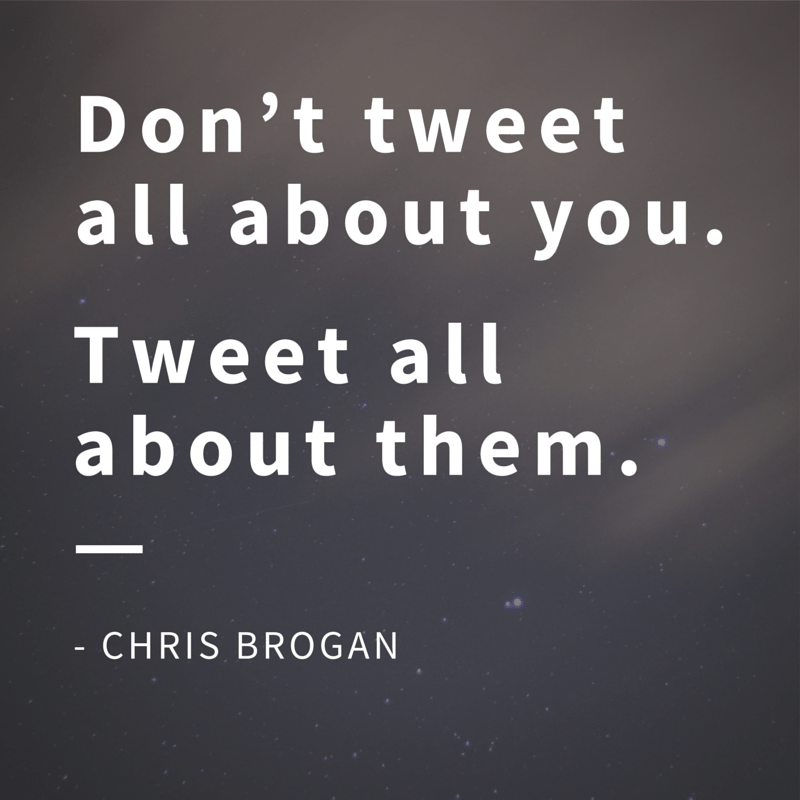
This advice comes courtesy of Chris Brogan, and it rings true for me. Up to 80% of all social media posts are about the same topic: ourselves. Imagine the impact focusing on others could make. There’s a similar theme for content marketing: Focus on other people. When you take the attention off yourself, your Twitter can flourish.
Over to you
What advice do you wish you heard when you started Twitter?
I’d love to hear your experience and what you’ve found helpful along the way. Leave a comment here, or you can catch me on Twitter.
Ready for more? You might like The Twitter Strategy Guide: 14 Twitter Tips to Take Your Tweeting to the Next Level.
- The official math: 22,000 tweets times 30 characters per tweet equals 660,000 characters per day. At an average of five characters per word, 660,000 characters equals 132,000 words. Animal Farm is just under 30,000 words in length.
Image credits: JefferyTurner, Digiwriteit, IconFinder, Unsplash
Related Articles

Stop chasing the tail-end of Instagram audio trends — here are all the methods you can use to find the most popular music and sounds.

Learn how to generate AI images and schedule them across social platforms using Buffer and Apple's Image Playground. Discover tips for creative AI image generation and when to use AI-generated visuals strategically.

All the features on Bluesky, plus how to use them.